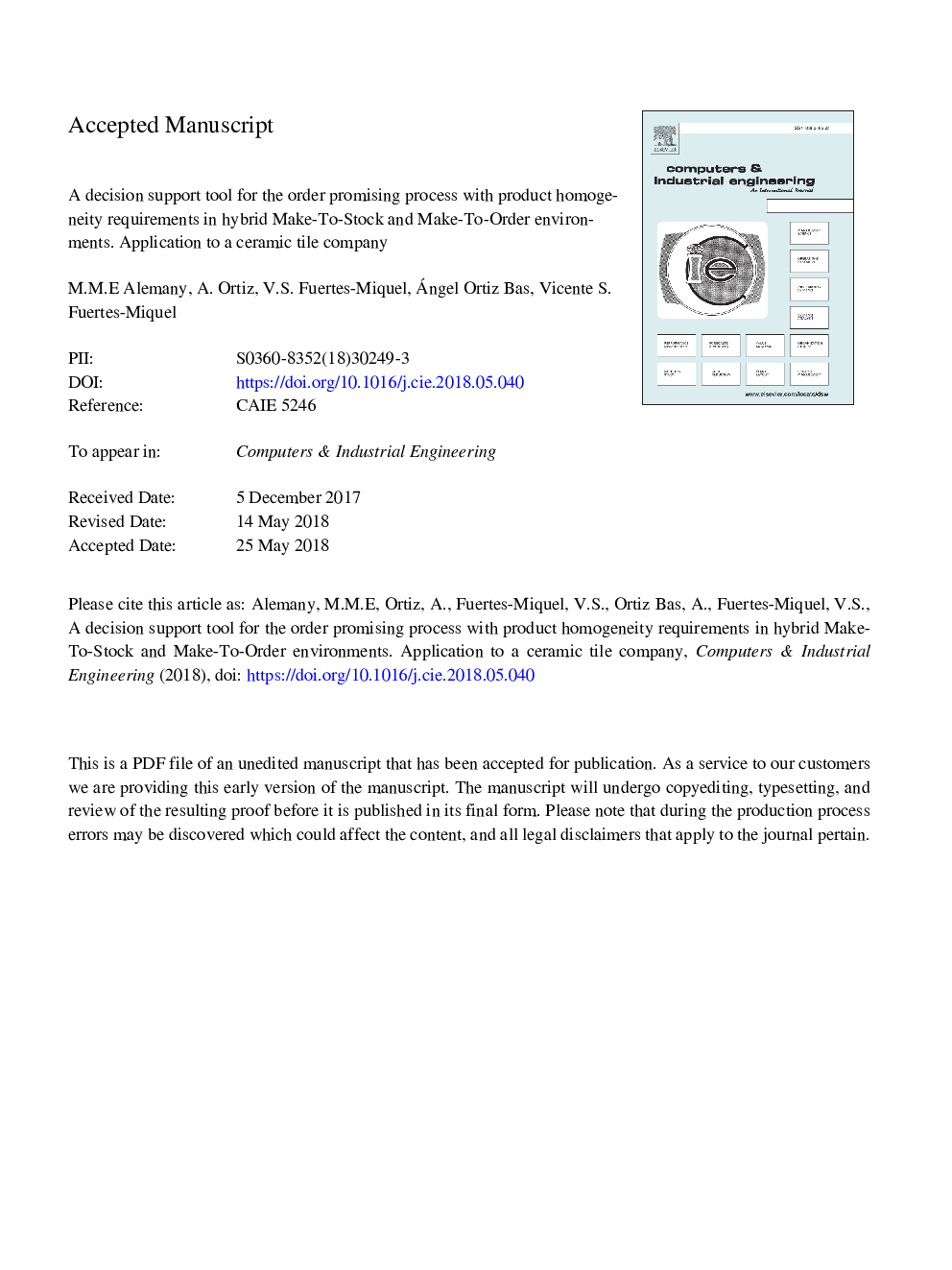| Article ID | Journal | Published Year | Pages | File Type |
|---|---|---|---|---|
| 7540985 | Computers & Industrial Engineering | 2018 | 47 Pages |
Abstract
Order promising in manufacturing systems that produce non-uniform units of the same finished good becomes a more complex process when customer orders need to be served with homogeneous units. To facilitate this task, we propose a mathematical model-based decision tool to support the order promising process according to product homogeneity requirements in hybrid Make-To-Stock (MTS) and Make-To-Order (MTO) contexts. In these manufacturing environments, the comparison of Available-To-Promise (ATP) and/or Capable-To-Promise (CTP) quantities with homogeneous ones ordered by customers is necessary during the order commitment. To properly deal with customers' product uniformity requirements, different ATP consumption rules are implemented by defining a novel objective function. CTP modelling in these systems also entails having to address new aspects, such as estimating future homogeneous quantities in additional lots to the master plan, accomplishing minimum lot sizes and saving in setups when programming new lots. By including CTP in the order promising model, a closer integration with the master production schedule is achieved. The resulting mathematical model was applied to a ceramic tile company in different supply scenarios and execution modes, and at several availability levels (ATP and ATP&CTP). The results validate model performance and provide insights into the impact of ATP consumption rules on the profits made from committed customer orders in different scenarios for the specific ceramic tile company.
Related Topics
Physical Sciences and Engineering
Engineering
Industrial and Manufacturing Engineering
Authors
MME Alemany, A. Ortiz, Vicente S. Fuertes-Miquel,
